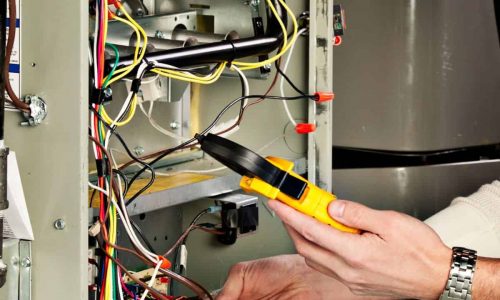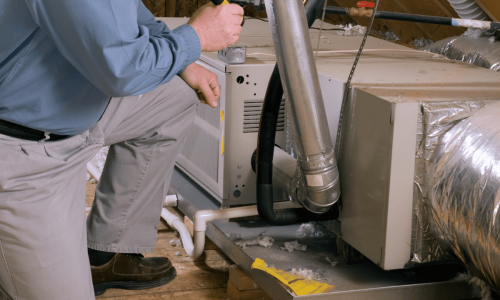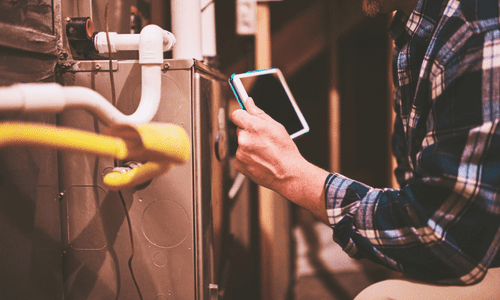When the temperature drops, your furnace becomes essential in keeping your home warm and comfortable. If your furnace has a traditional pilot light, knowing how to light a pilot light on a furnace is a valuable skill to ensure it stays operational.
This small but mighty flame ensures your heating system is ready to warm your home immediately. If your furnace’s pilot light has gone out and it’s your first time relighting, don’t worry—it’s a quick and straightforward process to relight it safely. Follow these steps to get your furnace back in action and keep your home cozy.
Why Is the Pilot Light Important?

The pilot light plays an important role in gas furnaces by igniting the main burners. It stays lit continuously, ensuring your furnace is ready whenever your thermostat calls for warmth. In newer furnace models, this function is often replaced by electronic ignition systems, but many homes still rely on traditional pilot lights for heating.
For homeowners, a functioning pilot light is essential for heating your home and ensuring the proper operation of gas appliances like furnaces and water heaters.
If the pilot light goes out, it may indicate:
- A temporary interruption in the flow of gas supply.
- A draft or airflow issue.
- A malfunctioning thermocouple or other components.
While relighting the pilot light is generally safe, never attempt it if you smell gas. If this happens, turn off the gas line immediately and call a professional HVAC technician at River Valley. Our heating repair services cover everything from faulty thermocouples to complex furnace issues, ensuring your home stays warm and comfortable.
8 Steps to Safely Light a Pilot Light on a Furnace

Before you get started, follow all safety precautions. Before you get started, follow all safety precautions. Always refer to your furnace’s manufacturer’s instructions for model-specific guidance, ensure proper ventilation, and wait for any lingering gas to dissipate.
Below are the easy-to-understand steps to light a gas furnace pilot light and get your system running smoothly again:
1. Turn Off the Furnace
First, switch your thermostat to the “off” position. This ensures that the furnace won’t turn on while you’re working on the pilot light. This step is critical because it prevents the furnace from activating while gas is still being handled. It also ensures that no unnecessary heat is generated during the relighting process.
2. Locate the Pilot Light
Next, find the gas valve on your furnace. The valve will typically have three settings: “on,” “off,” and “pilot.” The pilot light itself is usually near the burner assembly. If you’re unsure of its location, refer to the furnace’s manual for precise instructions. Identifying the correct valve and components will make the process smoother and safer.
3. Turn the Gas Valve Knob to “Off”
Turn the control knob on the gas valve to the “off” position and wait at least five minutes. This dissipates residual gas, making the environment safer for lighting the pilot light. This is a necessary safety precaution to prevent the risk of ignition from lingering gas fumes. Always ensure you allow enough time for the gas to clear out.
4. Switch the Valve Knob to “Pilot”
After waiting, turn the valve knob to the “pilot” position. While holding the valve knob down, press it in to allow gas to flow to the pilot assembly. This step is vital because it ensures the gas is directed to the pilot light so it can ignite. Be sure to hold the valve down firmly to allow for proper gas flow.
5. Ignite the Pilot Light
While continuing to hold the valve knob down, use a long lighter or match to ignite the pilot light. Hold the flame close to the pilot light assembly until it catches. It may take a few seconds, so be patient. Once the pilot light is lit, make sure the flame stays steady. This is the most critical part of the process, as a steady flame indicates that the pilot light is working correctly.
6. Hold the Valve Knob Down
Keep the valve pressed for about 30 seconds. This gives the thermocouple a safety feature, time to heat up, and signals the gas valve to stay open. If the thermocouple doesn’t register the heat from the flame, the gas valve could shut off prematurely, causing the pilot light to go out. Holding the valve down ensures the thermocouple functions correctly and the gas supply remains stable.
7. Turn the Gas Valve to “On”
Once the pilot light stays lit, release the valve and turn it to the “on” position. This activates the gas flow to the furnace, allowing it to start heating your home. If the pilot light stays on, it confirms that the furnace is back in operation. If it goes out, repeat the process to ensure the thermocouple has heated up properly.
8. Restore the Thermostat Settings
Finally, adjust your thermostat to the desired temperature. Allow the furnace to run for a few minutes to ensure it works properly. If the furnace produces heat and the pilot light stays on, you’ve completed the process! This step confirms everything is functioning as it should, and your home will start warming up.
Troubleshooting Common Pilot Light Problems

Sometimes, relighting the pilot light doesn’t go as planned. Here are some common issues and tips to address them:
- Drafts or airflow issues: Check for open windows or vents near the furnace. Eliminating drafts can prevent the pilot light from going out.
- Faulty thermocouple: The thermocouple may need to be cleaned or replaced. This device detects the flame and keeps the gas supply open.
- Gas supply issues: Ensure the gas supply valve is fully open.
If troubleshooting doesn’t resolve the issue, don’t hesitate to contact the professionals at River Valley Air Conditioning for expert furnace repair and maintenance. Safety comes first, and our team is here to help.
The Benefits of a Well-Lit Pilot Light
There are several pros to using a pilot light, including:
- Convenience: Once lit properly, the pilot light remains burning, eliminating the need to light the appliance manually before every use.
- Safety: A well-lit pilot light is a strong indicator that the gas supply to the heating appliance is functioning correctly. It also helps determine the absence of gas leaks, which can otherwise be a safety hazard.
- Reliability: A pilot light is a highly reliable ignition source. It also ensures that the gas appliance can be started safely and easily whenever needed.
Relighting the pilot light doesn’t need to be complicated. However, if you’re unsure or encounter issues, DIY attempts might not always work. River Valley Air Conditioning is just a phone call away. Our team is always available to help you repair or install a new heating unit.
Need Help with Your Furnace? Contact River Valley Air Conditioning

If you’ve followed the steps and still need assistance or are uncomfortable with the process, we’re here to help!
At River Valley Air Conditioning, we understand how vital a working furnace is to your family’s comfort. With decades of experience and a commitment to customer satisfaction, we’re your go-to solution for all HVAC needs. Whether it’s relighting a gas furnace pilot light, repairing a reset button, replacing an access panel, or improving your indoor air quality, our friendly technicians are here to help.
Don’t let a minor issue leave you in the cold. Contact us anytime for reliable and professional assistance with your furnace and HVAC systems. We’re here to make sure your heating system works at its best!
